Introduction
Faceless marketing isn’t a trend. It’s a takeover.
In 2025, entire brands are scaling without a single selfie, personal story, or influencer at the helm. No personal branding. No founder’s face. Just systems, strategy, and content that performs.
And the results? Impossible to ignore.
Anonymous YouTube channels are racking up millions of views. TikTok voiceovers are going viral without a face in sight. AI-written blogs are ranking, selling, and converting while the creators stay invisible.
This isn’t about hiding. It’s about building something bigger than yourself.
Faceless marketing is the new weapon of choice for creators, operators, and entrepreneurs who want to grow without becoming the brand. No fame. No burnout. Just leverage.
Key Takeaways
- Faceless marketing is rising in 2025 as creators and brands shift from personality-driven content to scalable, system-driven strategies.
- Scalability, privacy, and reduced burnout are the biggest advantages allowing one person to run multiple brands at once.
- Success depends on value, not visibility. Faceless content works when it solves problems, entertains, or delivers consistent results.
- Best platforms for faceless marketing include YouTube automation, TikTok voiceovers, faceless blogs, and email newsletters.
- Not for everyone: industries like coaching, consulting, and influencer work still require personal branding and connection.
- Execution matters. Faceless is not “lazy marketing”, it requires strong systems, content quality, and clear branding to stand out.
Disclaimer: I am an independent Affiliate. The opinions expressed here are my own and are not official statements. If you follow a link and make a purchase, I may earn a commission.
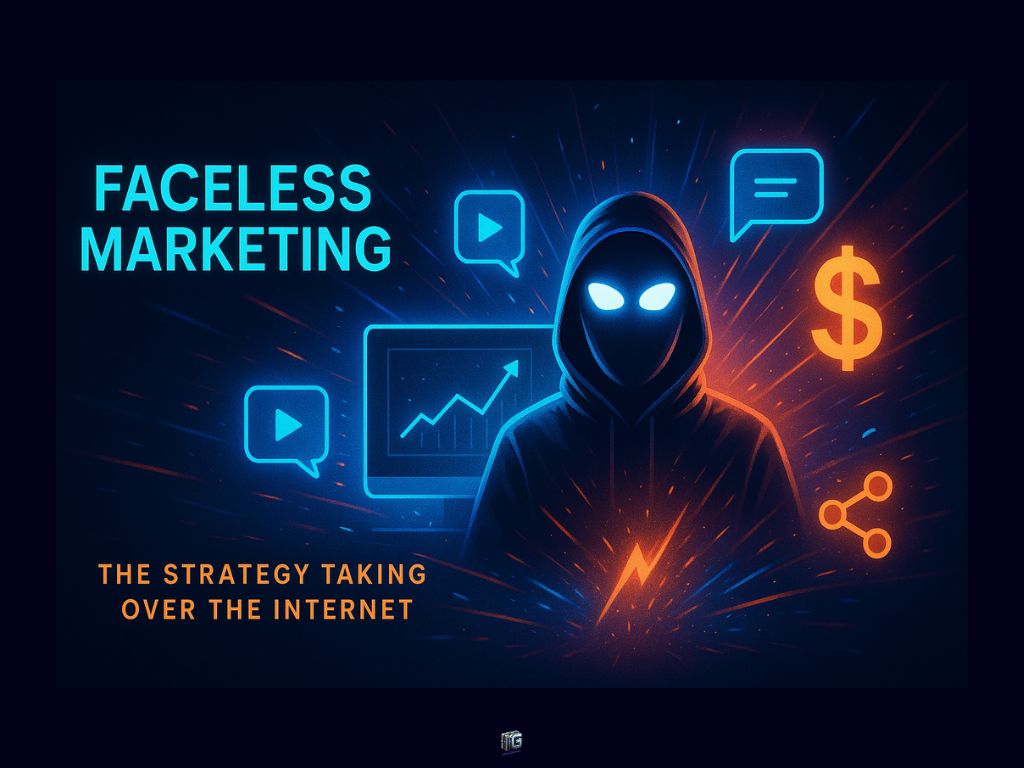
What Is Faceless Marketing, Really?
Faceless marketing isn’t about hiding. It’s about removing the bottleneck, you.
It’s a strategic shift from personality-driven branding to system-driven content. Instead of building an audience around your identity, you build around a topic, niche, or outcome and let the content do the talking.
There’s no face. No founder front and center. Sometimes not even a name.
Think YouTube channels with voiceovers and stock footage. TikToks with trending audio and zero personal appearances. Blogs with no author bio. Email newsletters that deliver value but never mention who’s behind them. It’s all faceless and it works.
The key? Value over visibility.
People don’t care who you are. They care what they get. If the content educates, entertains, or solves a problem, they’ll follow, click, and buy. Whether or not they know who’s behind it.
Faceless marketing replaces personality with process. Identity with execution.
It’s not about being anonymous. It’s about being efficient.

Why Faceless Marketing Is Taking Over in 2025
People are burning out on being the brand.
Creators are exhausted. Entrepreneurs are tired of performing. And audiences? They’re no longer obsessed with personality, they’re obsessed with value.
Faceless marketing is exploding because it solves three growing problems at once: creator fatigue, privacy concerns, and the need for scalable, systemized content.
Platforms have changed too. In 2025, TikTok doesn’t care about your face, it cares about your hook. YouTube rewards watch time, not charisma. SEO ranks structure, not selfies. The algorithms don’t need your story. They need your content to keep people locked in.
AI has only made the shift faster. You can now script, voice, edit, and publish content at scale without ever going on camera. One person can run what looks like a media brand, while never showing up.
And here’s the uncomfortable truth: audiences often trust faceless content more. No ego. No oversharing. And no “influencer energy.” Just useful content delivered consistently.
This isn’t a gimmick. It’s a response to how the internet works now.
Pros & Cons of Faceless Marketing
Here’s a quick comparison of the benefits and drawbacks of running faceless brands in 2025:
| Pros | Cons |
|---|---|
| Scalable – can run multiple brands without being the face | Harder to build personal connection & community trust |
| Privacy & safety – no need to expose your identity online | Competitive – faceless content often looks similar |
| No burnout from constantly performing or posting selfies | Requires strong systems, scripts, and editing to stand out |
| Easier to outsource, automate, and delegate content creation | Can feel “generic” if not carefully branded |
| Business can be sold or transferred more easily (not tied to you) | Success depends heavily on content quality, not personality |
| Audiences often trust faceless content as unbiased & focused on value | Not ideal for industries that depend on personal credibility (coaching, consulting, influencer work) |
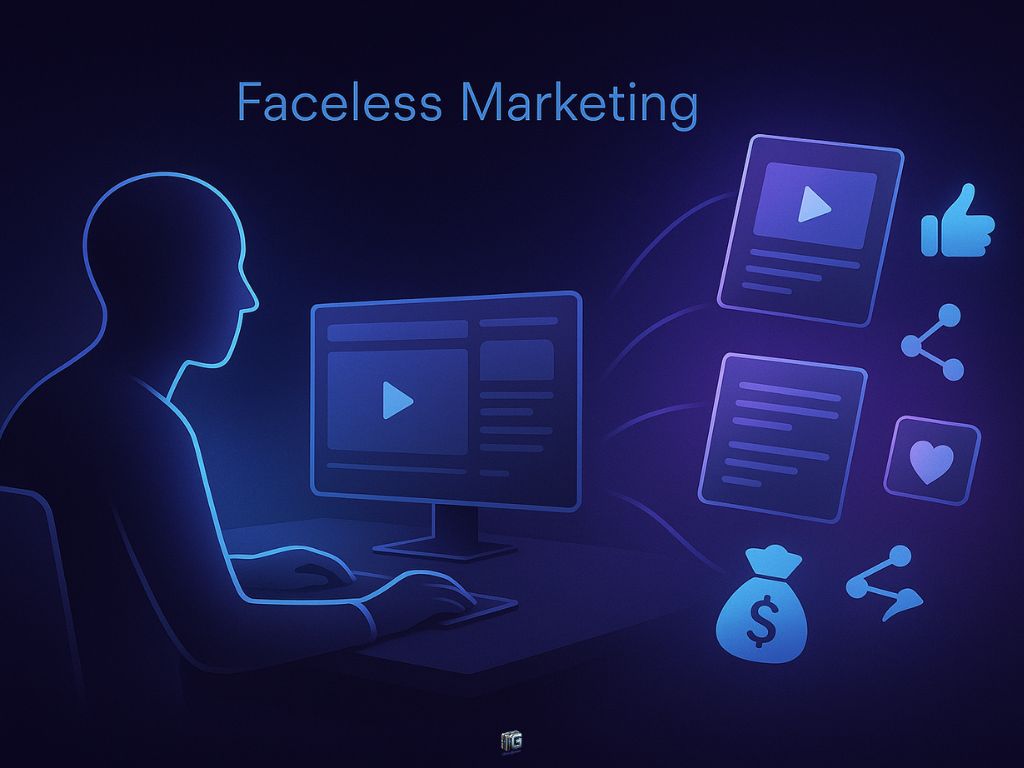
Faceless Marketing: Examples of Faceless Brands That Are Crushing It
Faceless doesn’t mean invisible, it means strategically removed.
And some of the highest-performing brands online right now? You’ve never seen their founders. You don’t know their names. But you’ve definitely seen their content.
YouTube Automation Channels
Tens of millions of views. Zero faces. These channels use voiceovers, stock footage, or AI-generated visuals to create binge-worthy content. Niches like tech, finance, luxury, and mystery thrive here built entirely on systems, not personality.
TikTok Voiceover & Slideshow Accounts
Scroll long enough, and you’ll run into faceless TikTok brands. They use trends, scripts, captions, and curated visuals to drive virality. No dancing. No filters. Just hooks and storytelling that pull people in.
Niche Blogs & Affiliate Sites
Thousands of faceless blogs rank for high-intent keywords. The content solves problems, ranks on Google, and drives affiliate revenue all without a face, name, or backstory. Some of these are solo operations. Others are entire content empires.
Print-on-Demand & Dropshipping Stores
The storefronts look polished. The branding feels cohesive. But behind it? No founder in sight. These businesses are built on product-market fit, ad creatives, and backend automation not personal connection.
Email Newsletters Without a Name
Faceless email lists are growing fast. Value-packed insights, curated news, digital products all sent from a brand name, not a person. And when the content hits, readers don’t care who wrote it.
These brands prove one thing: trust doesn’t require a face. It requires relevance, consistency, and execution.
Faceless Marketing Content Types
This table highlights the most common faceless content styles and how they work in practice:
| Content Type | How It Works (Faceless) | Best For |
|---|---|---|
| YouTube Automation | Uses stock footage, voiceovers, or AI visuals to create monetized videos without showing a face. | Entertainment, Tutorials, Finance, Tech |
| TikTok Voiceover & Slideshows | Short-form content using captions, trending audio, and visuals with no personal appearances. | Viral Trends, Storytelling, Quick Tips |
| Faceless Blogs | SEO-driven articles without personal branding, monetized via ads or affiliate links. | Evergreen Niches (health, finance, lifestyle) |
| Email Newsletters | Anonymous emails sent under a brand name with curated insights, digital products, or affiliate offers. | News, Business Insights, Product Funnels |
| Podcasts (Voice-Only) | Audio-only shows sharing insights, stories, or interviews without video or personal branding. | Education, Thought Leadership, Niche Communities |

Faceless Marketing: The Strategic Power of Staying Invisible
There’s a reason smart operators are stepping out of the spotlight invisibility is leverage.
When you go faceless, you’re not just avoiding the camera. You’re removing yourself as a liability. No cancel culture. No parasocial expectations. And no pressure to “perform” every time you hit publish.
More importantly, you’re building something that can scale without you.
You can outsource, automate, delegate.
You can sell the business, license the content, or run five brands at once because none of them depend on your personality to function.
It’s not just about privacy. It’s about power.
Faceless brands aren’t bottlenecked by lifestyle or personal availability. They don’t stop working because you’re tired, sick, or offline. They’re systems built to operate without burnout.
And when built right? They convert just as well as personal brands sometimes better. Because the trust doesn’t come from your face. It comes from what you consistently deliver.
Visibility is a choice. But in 2025, invisibility is an edge.
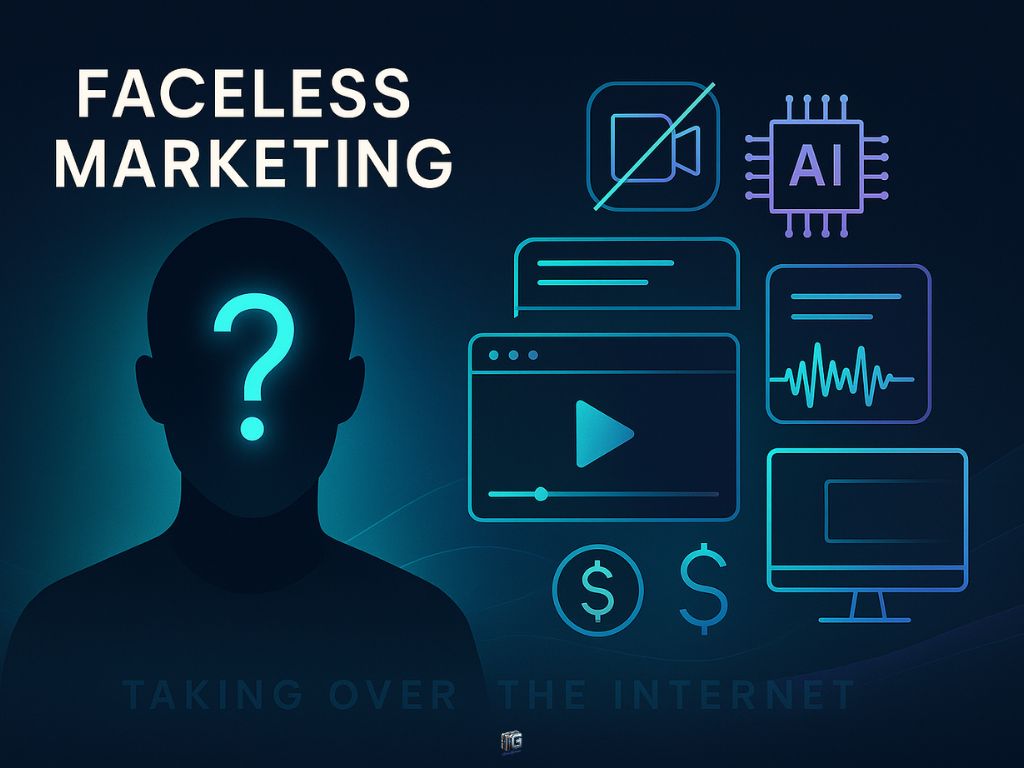
But Let’s Be Honest: It’s Not “Set and Forget”
Faceless doesn’t mean effortless.
The myth is that you can hide behind a logo, automate everything, and watch the money roll in. That’s not how this works. The best faceless brands are crafted, optimized, and relentlessly strategic.
Voiceovers still need great scripts. Slideshows still need storytelling. Blogs still need hooks, formatting, and content architecture that keeps readers locked in. You’re not escaping the work, you’re just shifting the focus.
The problem? Most people treat faceless as “lazy.” They pump out shallow content, skip editing, and wonder why it doesn’t take off. But without trust, tension, and value, faceless content fades fast.
This model only works if you treat it like a business, not a loophole. You don’t need your face to build a brand.
But you do need a reason to be followed.

Who Should (and Shouldn’t) Go Faceless
Faceless marketing isn’t for everyone. And that’s the point.
If you’re a systems thinker, operator, or strategist someone who wants to build brands that scale without constant personal involvement, this model fits like armor. It rewards structure, consistency, and execution over charisma.
You thrive behind the curtain. You like building engines, not performing for followers. That’s the faceless edge.
But if your business depends on human connection, community trust, or personality-driven influence think coaches, consultants, influencers, or personal brands going faceless could hurt more than help.
People buy from people in those industries. Removing your face removes your leverage. Faceless is a framework, not a shortcut. It’s not for hiding. It’s for operating without dependency.
If your audience needs to know, like, and trust you, show up. If your audience just needs the result go faceless and scale.
Faceless Marketing vs Personal Branding
Here’s a direct comparison of faceless marketing and personal branding to help you decide which path suits your business in 2025:
| Aspect | Faceless Marketing | Personal Branding |
|---|---|---|
| Identity | Brand stands on niche, content, or outcome not tied to a face | Brand revolves around your personality, story, and presence |
| Scalability | High – systems, automation, and outsourcing allow multiple brands | Limited – growth depends on your personal time, energy, and availability |
| Trust Building | Built on consistent value, relevance, and execution | Built on human connection, relatability, and authenticity |
| Privacy | High – you remain anonymous or in the background | Low – your face, lifestyle, and story are public |
| Business Transferability | Easy to sell or hand off since it’s not tied to a person | Harder to sell because the brand identity is linked to you |
| Best Fit For | Operators, strategists, creators who prefer building behind the scenes | Coaches, consultants, influencers, thought leaders who thrive on visibility |
| Challenges | Risk of looking generic if content isn’t well-branded | Risk of burnout and pressure to constantly “show up” |

How to Start Building a Faceless Brand Today
You don’t need a huge team. You don’t need fancy gear. And you definitely don’t need to “put yourself out there.”
You need a system one built around value, not visibility.
1: Choose the Right Channel
Pick one platform that rewards content, not personality:
- YouTube (voiceover + stock footage)
- TikTok (trends + captions or slideshows)
- Blogs (SEO + niche targeting)
- Email (anonymous newsletters or product funnels)
Start with one. Master it. Then scale.
2: Define What You Deliver
Without a face, your value needs to be crystal clear.
Are you entertaining? Solving problems? Sharing insights?
Teaching skills?
Your content needs to hit or no one will care who’s behind it (which is the point).
3: Build a Content Machine
Use tools to automate production:
- AI writers for blogs and scripts
- Voiceover tools for narration
- Auto editors for video workflows
- VAs to manage publishing, comments, repurposing
It’s not passive. But it’s scalable and you stay invisible the entire time.
4: Focus on Assets, Not Attention
Don’t chase followers. Build leverage.
Every piece of content should do one of three things:
- Build trust
- Drive traffic
- Convert silently
Faceless doesn’t mean forgettable. It means intentional.
For a hands-on guide to selling digital products and building faceless infrastructure, explore the full breakdown in Faceless Digital Marketing.
Faceless Marketing Starter Roadmap
Follow these steps to launch your faceless marketing business effectively:
| Step | Action | Tools/Examples | Goal |
|---|---|---|---|
| 1. Pick a Platform | Choose where to start (YouTube, TikTok, Blog, Email). Don’t spread too thin. | YouTube, TikTok, WordPress, Substack | Focus and consistency |
| 2. Define Your Niche & Value | Decide what problem you solve or what content you’ll deliver. | Health tips, Finance guides, AI tools reviews | Clarity and direction |
| 3. Create Content Systems | Script, outline, and batch-produce faceless content. | ChatGPT, Canva, Pictory, CapCut | Consistency and scale |
| 4. Build Anonymous Branding | Use a logo, channel name, or newsletter brand (not your personal identity). | Canva (logos), Brand kits | Professional presence |
| 5. Publish & Optimize | Upload regularly, use SEO/keywords, test hooks & thumbnails. | TubeBuddy, Ahrefs, TikTok Trends | Visibility and traction |
| 6. Monetize | Add ads, affiliate links, digital products, or subscriptions once traffic grows. | AdSense, Amazon Affiliates, Gumroad, Patreon | Revenue and growth |
| 7. Scale & Automate | Delegate tasks, repurpose content, and expand into new platforms. | VAs, Repurpose.io, Zapier | Freedom and scalability |
Mistakes to Avoid in Faceless Marketing
Faceless marketing can be highly effective, but only when approached strategically. Many creators make mistakes that weaken their results and slow growth.
Here are the most common pitfalls to watch for:
1. Treating Faceless Marketing as “Lazy Marketing”
Some assume faceless means effortless, publishing shallow or generic content. This approach rarely works.
How to fix it: Prioritize value-driven content and well-structured storytelling.
2. Ignoring Branding and Consistency
Without a consistent brand identity such as logos, tone, and design faceless brands often blend into the noise.
How to fix it: Establish a clear brand style and apply it across all platforms.
3. Skipping Engagement
Faceless does not mean voiceless. If you avoid interaction, your content risks feeling impersonal.
How to fix it: Stay present through comments, replies, newsletters, or community updates.
4. Over-Relying on Automation and AI
Automation helps scale, but overuse can lead to robotic content that lacks authenticity.
How to fix it: Use AI for efficiency, then refine with human editing and unique insights.
5. Choosing the Wrong Niche
Not all industries work with faceless models. Some depend on personal connection and trust.
How to fix it: Focus on niches where results matter more than personality, such as finance, tutorials, entertainment, or productivity.
6. Not Planning Monetization Early
Building an audience without a revenue plan wastes time and effort.
How to fix it: Decide on your monetization model upfront ads, affiliate offers, digital products, or memberships.
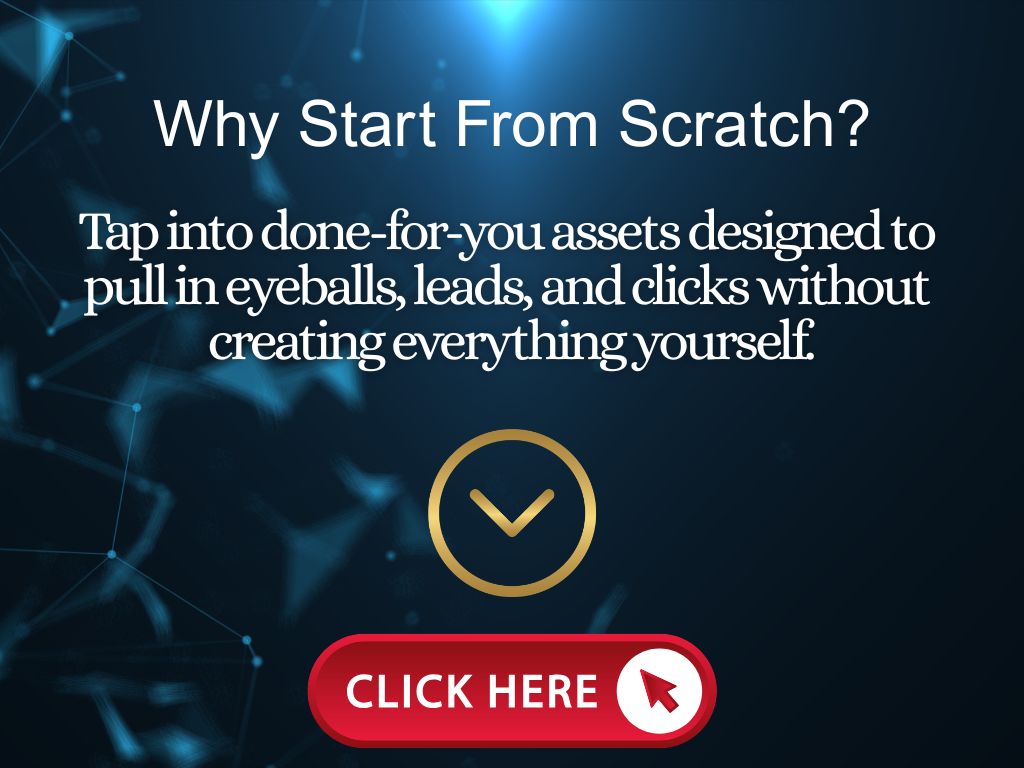
Faceless Marketing Monetization Models
Here are the most effective ways faceless creators monetize their digital presence in 2025:
| Monetization Model | How It Works in Faceless Marketing | Best Platform Fit |
|---|---|---|
| Ad Revenue | Earn income from views and watch time on faceless videos, TikToks, or blogs through platform ad programs. | YouTube, TikTok, Blogs |
| Affiliate Marketing | Promote products or services anonymously using blogs, videos, or newsletters with affiliate links. | Blogs, YouTube, Email |
| Digital Products | Sell faceless eBooks, templates, or online courses under a brand name instead of your personal identity. | Websites, Blogs, Email |
| Print-on-Demand (POD) | Design and sell faceless products (shirts, mugs, posters) without managing inventory. | Shopify, Etsy, POD Platforms |
| Memberships & Subscriptions | Offer exclusive content, newsletters, or private community access under a faceless brand. | Patreon, Substack, Private Sites |
Conclusion
Faceless marketing isn’t a shortcut. It’s a shift. In 2025, the smartest operators aren’t chasing fame. They’re building engines silent systems that publish, convert, and grow without ever showing a face.
This isn’t about hiding. It’s about choosing leverage over visibility. No personal branding. No performance pressure. And no burnout loop.
But don’t confuse faceless with effortless. Execution still wins. Strategy still matters. And content still has to hit.
The face is optional. The value? Non-negotiable.
Next: Read our Affiliate Marketing Guide and our High-Ticket Affiliate Marketing Guide.
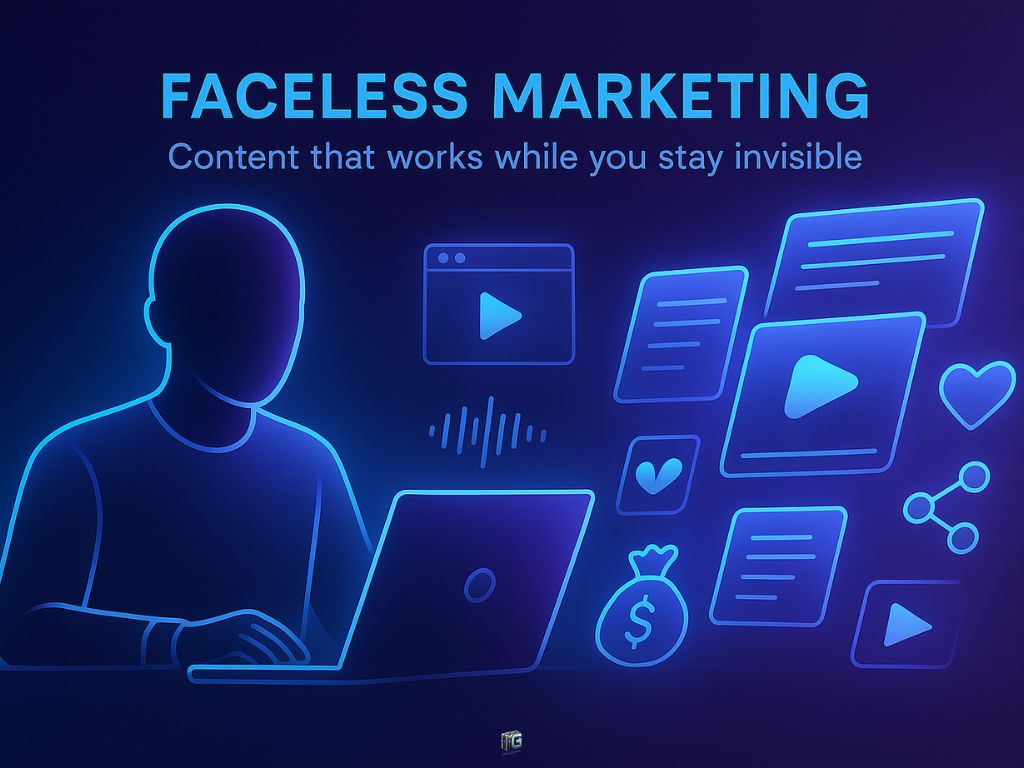
Frequently Asked Questions (FAQs)
What is faceless marketing, exactly?
Faceless marketing is a strategy where brands create and distribute content without showing the creator’s face or personal identity. It relies on systems, storytelling, and value not personality or visibility.
Is faceless marketing just a trend or here to stay?
It’s here to stay. As AI, automation, and burnout reshape the digital landscape, more creators and operators are choosing scalable, faceless models that don’t depend on constant personal exposure.
Can you build trust without showing your face?
Yes. Trust comes from value, consistency, and clarity not selfies. When your content solves problems or delivers real insight, the audience trusts the output, not the identity.
What’s the fastest way to start a faceless brand?
Pick one platform (YouTube, TikTok, a blog, or email), choose a niche, and focus on content quality. Use tools like AI writers, voiceovers, and automation to produce without showing your face. Start small, stay consistent, then scale.
How much can you actually make with faceless marketing?
There are faceless brands generating five to seven figures per year across platforms. Earnings depend on your niche, content strategy, monetization method, and execution not whether your face is on screen.

1 Comment
Faceless Digital Marketing: Build and Sell Without a Personal Brand - Ismel Guerrero. · May 20, 2025 at 5:05 pm
[…] movement is bigger than one tactic. This breakdown of faceless marketing shows how anonymity, automation, and precision are changing the […]